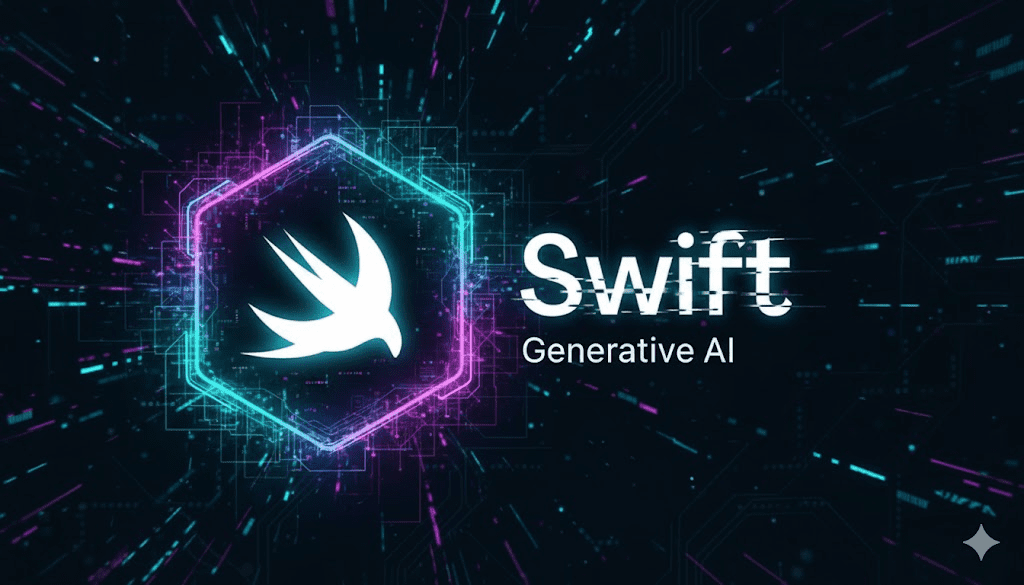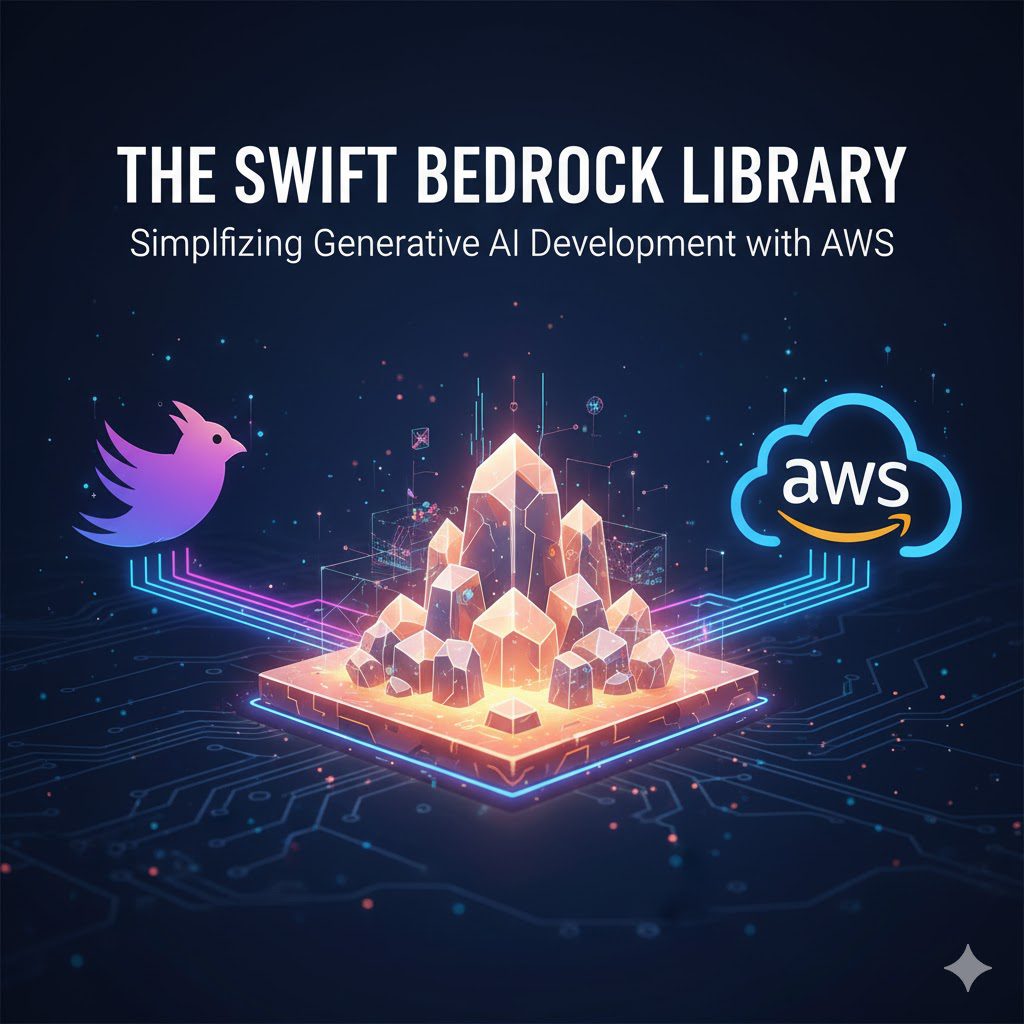Getting started with generative AI for Swift projects often means navigating complex, low-level APIs. This article details the creation of a specialized Swift Bedrock Library designed to dramatically simplify the developer experience when building and scaling AI applications using Amazon Bedrock, providing clean, intuitive access to powerful foundation models for tasks like real-time chat, image generation, and advanced reasoning.
The Foundation of Innovation: Amazon Bedrock
A great place to begin any generative AI journey within the Apple ecosystem is with Amazon Bedrock. Amazon Bedrock is the essential AWS service that provides an easy, unified way to build and scale AI applications using a vast array of industry-leading foundation models (FMs). These models, offered by companies like Anthropic, AI21 Labs, Meta, and Stability AI, are accessible through a single API, offering flexibility and choice for developers.

The scale of this offering is immense, but accessing these capabilities fundamentally relies on the Software Development Kits (SDKs). For the Swift community, developers can access Amazon Bedrock’s features through the AWS SDK for Swift. To operate at this massive scale—covering over 300 services in 13 different programming languages—the SDK code generation has to be fully automated every few days. This automated process ensures the SDKs are comprehensive and complete, reflecting all the latest API changes across all services.
However, this automation has a downside: the SDKs, by necessity, are very low-level and closely map to the underlying REST API definition. This means they are not always as intuitive as a developer might wish. For instance, if a developer wanted to send a simple text prompt with basic inference parameters, they would be faced with a substantial block of boilerplate code. Generating a single image from a text prompt would require a similarly large volume of code, forcing the developer to manage complex JSON structures manually.
Specifically, the input often requires a verbose “body” portion. This body is unique to every model family, and typing it out requires meticulous attention. A single typo or structural mistake means the request will fail entirely. This complexity creates a steep learning curve, making it tedious and non-intuitive to experiment with different foundation models.
From Source Code Digging to Official Documentation
The journey to simplifying Bedrock in Swift began in an environment of scarcity. When work on improving the developer experience started, there was minimal, if any, official documentation available on how to use the AWS SDK for Amazon Bedrock specifically within Swift projects. Every single operation—from sending a simple prompt to managing model parameters—required digging through the raw source code of the SDK itself.
This experience highlighted a massive pain point for any developer trying to get started. To ensure that the next developer would not have to navigate the same challenging learning experience, the very first code examples in the official AWS documentation for Amazon Bedrock in Swift were created. These foundational examples covered core capabilities like chat, image generation, video generation, and more. This provided the essential initial resources that were critically missing, making the learning experience significantly more pleasant and faster for the Swift community.
However, even with better documentation, developers were still faced with complicated, verbose code. They would still need to manage the low-level API intricacies, deal with the unique JSON body for every model, and ensure meticulous parameter configuration. The problem was not just documentation; it was the API layer itself.
The Solution: Introducing the Swift Bedrock Library
To solve the complexity inherent in the automatically generated SDK, the Swift Bedrock Library was created. This library dramatically simplifies the developer’s workload, allowing developers to perform complex AI tasks with only a few lines of code. This tiny, yet powerful, layer built on top of the AWS SDK for Swift transforms the generative AI development experience.

The Architecture of Simplicity
The Swift Bedrock Library slots perfectly into the existing AWS architecture:
- Foundation Models: At the base, Amazon Bedrock provides the APIs that access the massive capabilities of the foundation models.
- AWS SDK for Swift: The standard SDK provides access to these APIs in an idiomatic Swift environment, handling low-level network and authentication concerns.
- Swift Bedrock Library: This final, thin layer sits on top, making the interaction with Amazon Bedrock intuitive and convenient.
The library eliminates the need to manually construct the unique JSON body required for every model family. Instead, the developer uses the same, high-level functions for different models, and the library automatically handles the necessary customization, marshalling, and parameter conversion behind the scenes. This standardization vastly accelerates the process of iterating and experimenting with multiple models.
Unlocking Generative Capabilities with Intuitive Code
The library supports a wide array of leading foundation models, enabling a broad range of generative AI applications. The goal is to maximize the utility of Amazon Bedrock’s capabilities while minimizing the cognitive load on the developer.
Advanced Chat and Multimodality
The library offers streamlined access to powerful conversational models, supporting features essential for modern chat applications:
- Real-Time Streaming: It natively supports actual real-time streaming, allowing responses to be displayed to the user as they are generated, essential for a smooth user experience.
- Contextual History Management: Developers can easily manage conversation history by passing the previous conversation builder to the next request, ensuring the model remembers the context without requiring manual history concatenation.
- Multimodal Input: It supports sending an image alongside text questions, allowing users to ask questions about visual data or other documents, such as a PDF that the user doesn’t want to read themselves.
- Reasoning Support: For the most capable models, the library supports reasoning, showing the steps or thought process the model took to reach its conclusion, which is crucial for building trust and ensuring oversight.
Creative Image Generation
Image generation is made exceptionally simple. Developers can instruct Bedrock to generate an image by providing a prompt, which the library then handles by configuring the appropriate image generation model (like those from Stability AI) with minimal code. The library also supports advanced creative tasks, such as feeding the model an existing image and asking it to create an image variation off of it, allowing for iterative creative workflows.
Simplified Development Workflow
The library’s design focuses on the core tasks of a developer’s workflow:
- Make a Builder: Start by making a simple request builder where the model and the initial prompt are specified, along with any optional inference parameters or tools.
- Send the Request: Send the request to Bedrock using a clean, high-level function call, such as bedrock.converse(with: builder).
- Update History: Update the builder with the model’s reply, allowing it to seamlessly remember the conversation history for the next user input.
This abstraction dramatically reduces the cognitive burden of managing low-level API calls, allowing developers to focus on the application logic and user experience rather than complex infrastructure code.
The Power of Generative AI for Swift Applications
The Swift Bedrock Library directly enables practical, high-value applications. The foundational concept—turning random thoughts into organized, ready-to-post messages, as one developer successfully built—demonstrates the library’s power to rapidly prototype and deploy generative AI features within native Swift apps.

By providing an easy on-ramp to services like Amazon Bedrock, the library empowers developers to leverage cutting-edge foundation models for consumer, enterprise, and creative applications on iOS, macOS, and other Swift-supported platforms. The ability to easily integrate chat, reasoning, and image generation using familiar Swift syntax represents a democratization of generative AI capabilities within the entire Apple development ecosystem.
Conclusion: Lowering the Barrier to Entry
The massive potential of generative AI, often compared to transformative historical shifts, is contingent on its accessibility to the wider developer community. While foundational services like Amazon Bedrock provide the essential engine, the necessary complexity of massive-scale SDKs often creates friction. The Swift Bedrock Library serves as a vital bridge, a tiny but crucial layer of abstraction that dramatically simplifies the developer experience for Swift projects. By reducing boilerplate code, automating customization for different model families, and providing clear, high-level functions for complex tasks, the library allows developers to move faster, experiment more freely, and focus on innovation rather than infrastructure. This commitment to simplifying the tooling ensures that the next wave of developers can access foundation models with a more pleasant, easier, and ultimately faster learning experience, transforming the landscape of AI-powered Swift applications.






